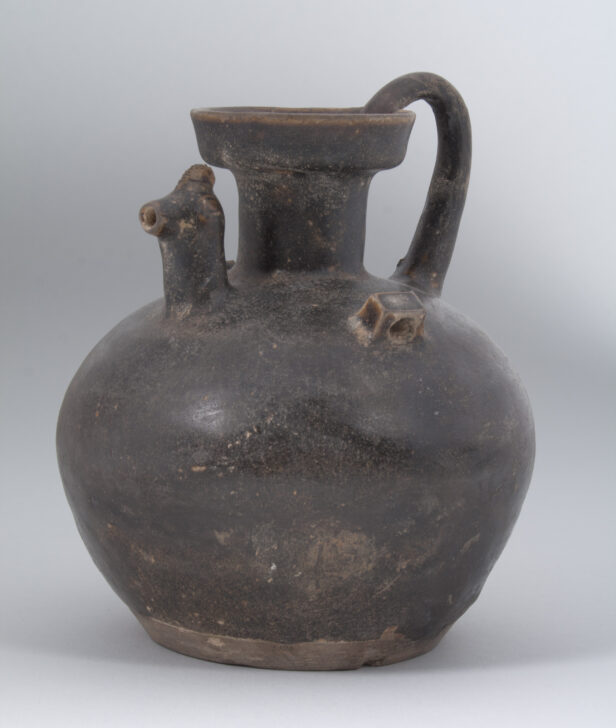Chicken Head Ewer
Chinese

Description
Subject Matter:
A black-glazed chicken head ewer (ji shou hu 鸡首壶) from the ou kilns of the Eastern Jin dynasty (317-439.)
During this time period yue kilns were the leading center of ceramic and celadon production. Chicken head ewers, among other animal headed ewers, a product of the yue kilns, first appeared during the Western Jin dynasty (265-317) in the funerary context, and continued through the sixth century. Their products were copied by other local kilns. The ou kiln, named after the ou river in Wenzhou county in southern Zhejiang, produced various types of stoneware including celadons and black-glazed wares, and this ewer is most likely one of their products. They served the markets of Zhejiang, Jiangsu, Fujian and Guangdong (Canton). It is unknown if functional versions of the chicken-head ewers were made for daily use, but the examples found in tombs mostly have false spouts. The onset of this form, specifically its bird or chicken head, may have been influenced by the importation of metal ewers from Central Asia with similar motifs.
Physical Description:
A stoneware globular bodied ewer with a narrow, flaring neck and dish-shaped mouth, a curved handle extending from the rim to the shoulder, a spout in the form of a chicken head, and two lug handles on the shoulder. It is covered in a dark brown-black glaze.
Usage Rights:
If you are interested in using an image for a publication, please visit https://umma.umich.edu/request-image/ for more information and to fill out the online Image Rights and Reproductions Request Form.